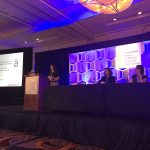Featuring the role of the research community in driving open access, global perceptions of Plan S, and the need for clearer guidelines on APC caps.
The three building blocks of open access via Scholastica
Much of the discussion surrounding open access focuses on future plans, overlooking existing tools. Although there is always room for technological advances, numerous software solutions for peer review, copy-editing and open access publishing are already in place. What is missing are the people and the means to build on these foundations. All open access journals will require financial input at some point in their life cycle. In theory, these costs can be reduced by editorial board members taking a more active role, as well as through software and infrastructure support from institutions. However, raising these funds will require a great deal of input from the research community and, ultimately, a change in mentality, moving away from the norms of academic publishing. Several groups, including the Library Publishing Coalition, have already established strategies to help researchers gain a greater understanding of the benefits of open access and the growing need for vocal supporters; however, a greater effort is needed towards free access to published research.
The global status of Plan S via Science
Amid the debate of which open access model is best, be it green, gold or diamond, the goals and status of the controversial Plan S are often lost. Although 16 funders across 13 countries have already committed to it, Plan S still has a long way to go before its implementation on 1 January 2020. A lack of detail surrounding article processing charges (APCs), restrictions on journal choice and challenging time frames are just some of the reasons that many countries, such as Belgium and Estonia, remain reluctant to sign up. While some countries, for example, India, remain enthusiastic towards Plan S, North American federal research agencies currently have no plans to abandon their own open access policies. However, a second US funder, in addition to the Bill & Melinda Gates Foundation, will join Plan S later this month, alongside a national funding agency in Africa.
How to navigate APCs via Coyne of the Realm
There is no dispute that open access journals have unprecedented benefits for researchers, policy makers, healthcare providers and the public alike. However, for some authors, the disadvantages of open access publishing associated with APCs often outweigh the benefits. Although Plans S states that institutions and funding bodies will be required to cover publishing costs, it is yet to provide any indication as to what the cap on these APCs might be, and how researchers without a good source of funding to cover these costs will be able to publish in high-impact open access journals. Authors may be able to avoid paying APCs by obtaining a waiver through initiatives such as the PLOS Global Participation Initiative, which is a publication fee assistance programme available to authors from countries categorized as Group 1 (costs fully covered) and Group 2 (costs partially covered). However, for many researchers from Eastern Europe and Latin America, APCs remain a persistent problem because many countries within these regions are found outside of Groups 1 or 2. Although personal waivers are available on a case-by-case basis, details of how to apply for these and the number of waivers available are often unclear. All of the aforementioned issues demonstrate the need for all researchers to provide feedback on Plan S and to strive for clearer guidelines surrounding APCs.
The endless cycle of academic publishing via The Conversation
Before applying for funding, researchers conducting a review of current literature are often hit by paywalls when trying to access the articles they need. If a researcher is lucky enough to secure funding for their research and years down the line find themselves in a position to publish, they are faced with the choice of publishing in a traditional journal or open access. If they select open access, they are often faced with steep APCs; if they select a more traditional route, journal subscription is required. In short, researchers and institutions are buying back their own work. With libraries struggling to cover the rising subscription costs, many researchers turn to platforms such as ResearchGate and Sci-Hub for access to journal articles, emphasizing the need for more accessible open access publishing and increased availability of preprints.






